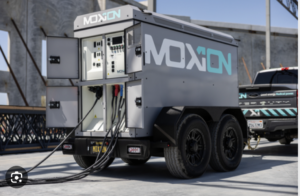LOS ANGELES (AP) — “Carmageddon II” — the sequel — is coming to one of the most crowded U.S. freeways, and authorities are hoping its subtitle won’t be “The Traffic Strikes Back.”
Transportation officials say what they would like to see during the last weekend of September is a rerun of last year’s two-day closure, when hundreds of thousands of motorists dodged doomsday predictions by staying away until the busy, 10-mile (16-kilometer) stretch of Interstate 405 reopened. It was one of the lightest freeway traffic weekends anyone in Los Angeles could remember.
Hopes are high that next weekend will have the same happy result, as businesses and residents prepare to avoid the roadway that must close again so work can be completed on a bridge.
At Ronald Reagan UCLA Medical Center, just outside the Carmageddon Zone, officials plan to house as many as 300 doctors, nurses and other staff members in dorms at nearby hotels so nobody will have trouble getting to work.
Some patients, including women in the latter stages of complicated pregnancies, are being encouraged to check in before the freeway closes at 12:01 a.m. Sept. 29.
“Everybody, including myself, will be here to man the entire event, just to make sure everything goes safely for our patients and staff,” says Shannon O’Kelley, the hospital’s chief operations officer.
A group of art enthusiasts, meanwhile, formed “Artmageddon,” featuring activities at dozens of museums and art-house theaters and listing them on the website artmageddonla.com. People are encouraged to walk or bike.
The UCLA campus, with about 41,000 students, has emergency traffic diversion plans in place. In Santa Monica, just down the road, a new emergency operations center opened last month. Authorities say every major transit, law enforcement and emergency services agency in the area has been cooperating in making contingency plans.
In the meantime, just what should people do over the weekend when they will hopefully be too afraid to pull out of their driveways?
“Eat, Shop and Play Locally,” advises the Los Angeles Metropolitan Transportation Authority, reciting its official Carmageddon II slogan.
The agency is partnering with hundreds of restaurants, tourist attractions and other venues to offer discounts to people who can show they used mass transit to get there.
If thousands of people hadn’t stayed home on a mid-July weekend last year, authorities say they might have caused a traffic backup so massive it could have spread to connecting freeways, gridlocking the entire city highway system. The result, “Carmageddon,” would have been miles and miles of idling cars filled with thousands and thousands of angry people.
“The risk factors are exactly the same as they were last year, so nothing has changed in terms of the heartburn that traffic agency people are feeling right now,” says Dave Sotero, a spokesman for the transportation authority.
It’s not just any freeway being shut down, but one that even on weekends, when traffic is relatively light, can carry a half-million vehicles. It’s also the one that links the city’s San Fernando Valley, where 1.7 million people live, to its dense, urbanized West Side and its beaches.
As they did for the first Carmageddon, officials have been posting flashing freeway signs for weeks warning people all over the state to stay away. On Labor Day weekend in early September, people driving in and out of the desert resort of Palm Springs, 100 miles (160 kilometers) to the east, began seeing the signs.
The freeway is scheduled to reopen at 5 a.m. Monday, Oct. 1, just before the morning rush hour.
Last year it opened 17 hours early, but Sotero says not to expect that again because there’s more work this time.
When all the work in the area is completed toward the end of next year, there will be a new, wider and seismically safer bridge crossing the freeway at the city’s scenic Mulholland Drive.
If the freeway doesn’t reopen on time, that’s when Carmageddon will really kick in.
While they insist they don’t expect that to happen, officials say they will be ready if it does.


 Moxion and NUE
Moxion and NUE